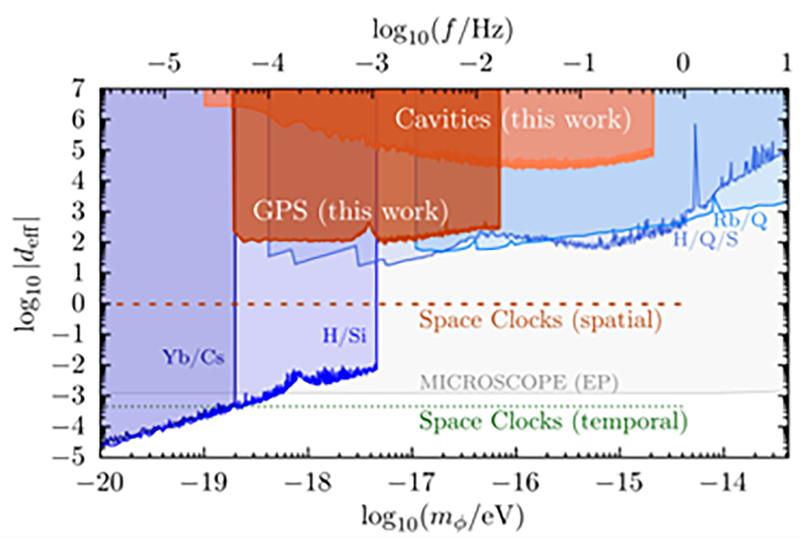New Technique to Detect Dark Matter Using Atomic Clocks and Lasers
A team of international researchers has developed an innovative approach to uncover the secrets of dark matter.
A team of international researchers has developed an innovative approach to uncover the secrets of dark matter. In a collaboration between the University of Queensland, Australia, and Germany's metrology institute (Physikalisch-Technische Bundesanstalt, PTB), the team used data from atomic clocks and cavity-stabilized lasers located far apart in space and time to search for forms of dark matter that would have been invisible in previous searches. This technique will allow the researches to detect signals from dark matter models that interact universally with all atoms, an achievement that has eluded traditional experiments.
The team analysed data from a European network of ultra-stable lasers connected by fiber optic cables [Schioppo et al., Nat. Commun. 13, 212 (2022)], and from the atomic clocks aboard GPS satellites. By comparing precision measurements across vast distances, the analysis became sensitive to subtle effects of oscillating dark matter fields that would otherwise cancel out in conventional setups.
Published in Physical Review Letters, this work highlights the power of international collaboration and cutting-edge technology. By enabling scientists to investigate a broader range of dark matter scenarios, this method brings us closer to understanding one of the universe's most elusive and fundamental components.
Wissenschaftlicher Ansprechpartner:
Dr. Nils Huntemann, Head of PTB's Working Group 4.43 „Optical Clocks with Trapped Ions“, Telephone: +49531592-4430, nils.huntemann@ptb.de
Die semantisch ähnlichsten Pressemitteilungen im idw


